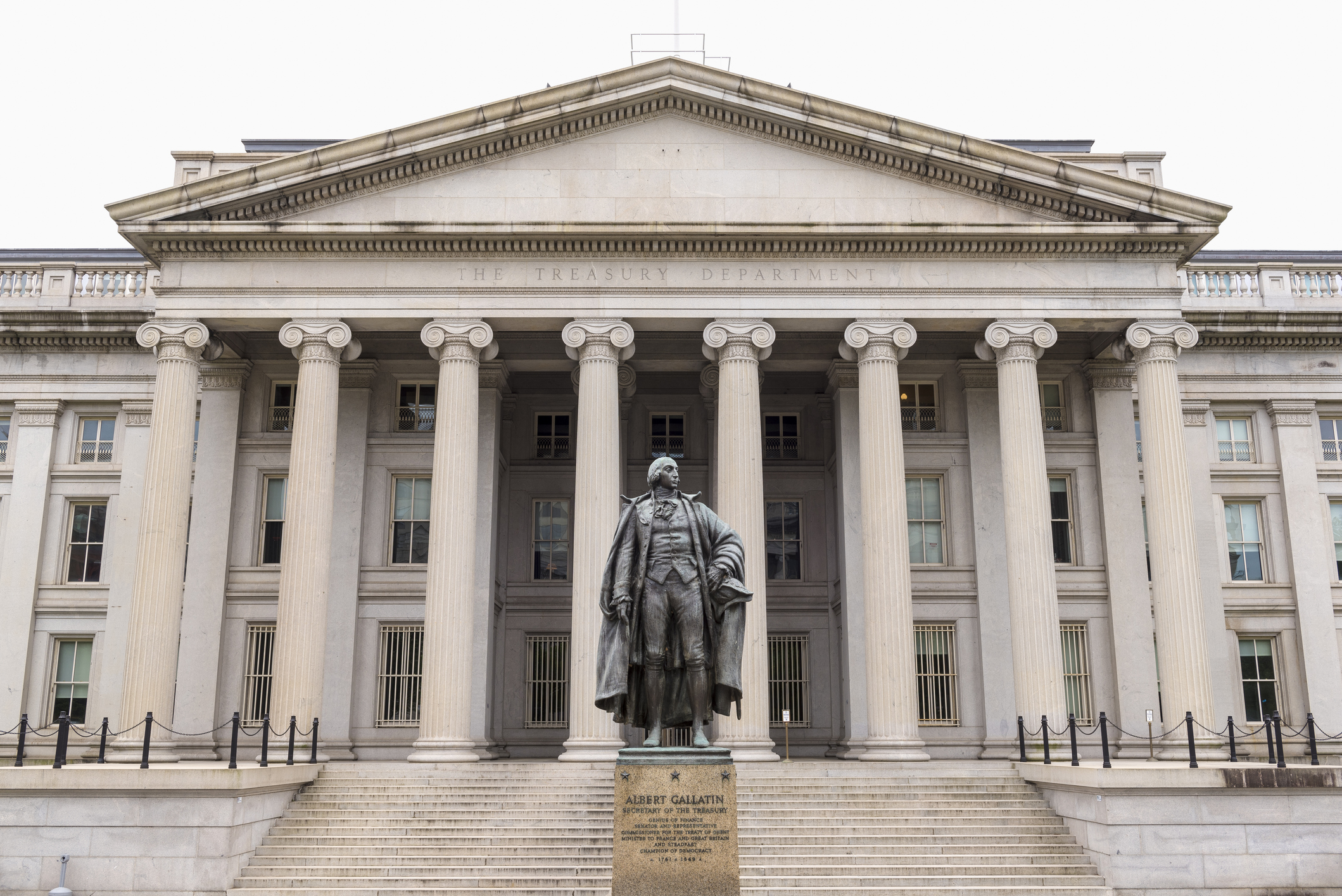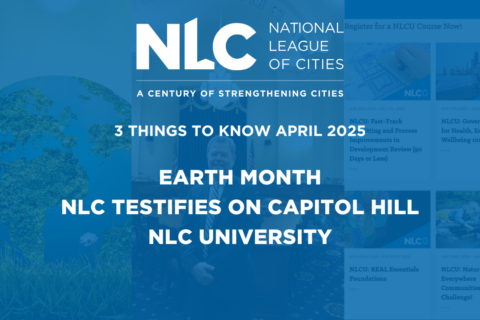The National League of Cities has submitted its comments to the U.S. Treasury on the Interim Final Rule to implement the Coronavirus State and Local Fiscal Recovery Funds established under the American Rescue Plan Act. The rules are a key factor in how funds can be used by the country’s 19,000 cities, towns and villages.
NLC invites anyone, including localities and community stakeholders, to submit their own comments on the rule through the Regulations.gov website. The deadline for submitting comments is July 16th.
From the outset of the coronavirus emergency, NLC worked closely with local elected officials from cities of every size to educate federal lawmakers about local government responsibilities and practices; and the hardship resulting from unavoidable revenue declines and unbudgeted emergency expenditures stemming from federal, state, and local efforts to contain the spread of COVID-19.
Overall, the American Rescue Plan Act and the Treasury Interim Final Rule both recognize cities are essential for emergency response and economic recovery in response to the unprecedented harm of the coronavirus emergency. However, in its recommendations, NLC urges the U.S. Treasury Department, Administration and Congress to consider improvements.
Specifically, NLC offers more than 30 specific recommendations for Treasury action related to the Final Rule to improve the guidance for municipalities as they work to reopen and rebuild their communities. NLC’s recommendations generally fall under three types of requests:
- Additional flexibilities to help address hardships that are greater or more costly than a municipality’s CLFRF grant can meet;
- Improved direction and clarity for local governments operating in good faith at reduced capacities;
- Reconsideration of certain rules that appear to be out of step with Congressional intent, or where unanticipated circumstances warrant reexamination.
NLC’s recommendations were guided by questions, issues and concerns it heard directly from its members and other local elected officials during its webinars and other engagements with municipal leaders. From clarification on definitions for early learning, to the importance of safe harbor designation for vulnerable residents, and flexibility on debt expenses and revenue streams.
Here is a summary of NLC’s recommendations based on expenditure categories:
Public Health and Economic Impacts:
- The Final Rule should unambiguously state that eligible expenditures under the Community Development Block Grant program and the Brownfields Utilization, Investment and Local Development (BUILD) Act are also eligible expenditures under the public health and economic impact category.
- The Final Rule should incorporate plain language that communicates a transfer of grant funds between different local units of government is permitted whenever a grantee determines such transfers will result in eligible expenditures that benefit (but not necessarily exclusively benefit) the residents within the grantee’s jurisdiction.
- The Final Rule should clarify that those activities addressing behavioral health and well-being include both acute and chronic care, and a variety of services including support groups that do not often directly accept insurance payments.
- The Final Rule should create a safe harbor for residents that stand to lose benefits as a result of aid provided by CLFRF grants, which are one-time emergency funds, as the IRS has done for recipients of Child Tax Credit payments.
- Where early learning is mentioned, the Final Rule should clarify early learning begins at birth rather than Pre-K. Infants and toddler care is more expensive than PreK and is harder to find.
- The Final Rule should provide additional direction to local governments for property acquisition.
- The Final Rule should provide additional direction and clarity related to affordable housing development.
- The Final Rule should permit local governments to use a portion of CLFRF grants to establish local equity funds.
- The Final Rule should clarify whether APRA funds can be used to cover relevant costs that were incurred by a City after January 27, 2020 but before March 3, 2021.
Budget Calculations and Revenue Loss:
- The Final Rule should permit municipal governments to calculate losses based on the locality’s fiscal year or the calendar year.
- The Final Rule should permit municipal governments to include revenue and losses from municipally-owned utilities when calculating lost revenue.
- The Final Rule should provide greater clarity on reporting for expenditures under the revenue loss category. In our view, once revenue losses are calculated, the “expenditure” in question is an expenditure to replace lost revenue as permitted by the Act.
- The Final Rule should permit flexibility with regard to revenue streams enacted after the base year or in direct response to the coronavirus emergency. Treasury should clarify that cities that enacted new taxes during either the base year of subsequent years be allowed to use alternative methods of determining revenue shortfalls that excludes this revenue.
- The Final Rule should reconsider the prohibition on depositing CLFRF grant funds into reserve accounts. Local governments that drew on their reserves for unbudgeted expenditures, or to cover revenue losses, directly related to the coronavirus emergency should be permitted to restore the reserves used for that purpose.
- The Final Rule should permit flexibility with regard to expenses related to debt. If a local government borrowed funds to respond to the coronavirus emergency, or to cover losses related to the coronavirus emergency in order to balance their budget as required by law, CLFRF grant funds should be permitted to pay down the principal and interest on that debt.
- The Final Rule should demonstrate the complete allocation of dollars appropriated for the Coronavirus Local Fiscal Recovery Fund. NLC urges Treasury to reallocate any grant funds returned as a result of the 75% cap limitation on NEU’s to municipalities on a basis that adheres to original allocation principles.
Premium Pay:
- The Final Rule should use the Bureau of Labor Statistics Standard Occupational Classification (SOC) program to designate broader sectors as eligible for premium pay.
- The Final Rule should provide direction on how local governments should calculate premium pay for irregular categories of employment such as volunteer firefighters and public safety staff who may be compensated differently than hourly wage staff.
- The Final Rule should provide clear direction on how local governments track and report premium pay allocations to non-government employment sectors eligible for premium pay grants, and if employers should withhold federal, state and local taxes from the premium pay.
Investments in Infrastructure:
Water and Sewer Recommendations :
- The Final Rule should expressly state that the local government is responsible for determining project eligibility for drinking water, wastewater and stormwater projects under the eligible project categories of the Clean Water and Drinking Water State Revolving Fund (SRF) programs.
- The Final Rule should expressly state that determining project eligibility should be based on the Federal project categories and definitions for the SRF programs, and not based on each State’s eligibility or definitions.
- The Final Rule should explicitly state that projects to be funded with Fiscal Recovery Funds do not need to apply for funding from the applicable State Clean Water or Drinking Water SRF program and that Fiscal Recovery Funds will be provided for eligible projects as grants not loans.
- The Final Rule should allow Fiscal Recovery Funds to be used for projects eligible under the Secure Water Act.
- The Final Rule should expressly cite consumer incentive programs designed to implement water use efficiency, conservation, green infrastructure, reuse and other distributed Clean Water and Drinking Water SRF eligible projects as authorized uses of Fiscal Recovery Funds.
- The Final Rule should expressly state which other federal programs would be triggered by the use of CLFRF grant funds for infrastructure projects, such as National Environmental Policy Act (“NEPA”), and Davis-Bacon prevailing wage requirements.
Broadband Infrastructure Recommendations:
- The Final Rule should increase the speed threshold for “underserved” to encompass all areas without 100/100 Mbps service to align with modern broadband usage needs and patterns and ensure a “donut hole” of locations with marginal service is not inadvertently created.
- The Final Rule should specify that eligible investments are those that prioritize or focus on providing services at adequate speeds to unserved and underserved households and businesses, to ensure that communities are clearly able to choose the projects and network designs that make sense locally, rather than being forced to find ways to serve individual locations scattered around a jurisdiction in isolation.
- Treasury should clarify that certain outdated technologies, such as copper, by definition do not meet the threshold for reliable wireline broadband service and that areas served by these outdated technologies can be presumed to be unserved or underserved.
- Treasury should clarify that local governments have flexibility to determine if a location is “reliably” served, including whether service is affordable for residents, whether network performance meets current needs, including resident and business experiences of network speeds or latency during key use times (such as the school/work day), whether end users report reliable service, and using data sources local governments choose, including local maps, resident surveys, and other methods.
- Treasury should clarify that eligible projects are not required to solely provide service to unserved and underserved locations and may also provide service to areas with existing wireline 25/3 Mbps service to meet project feasibility requirements, provided that they prioritize addressing the needs of residents disproportionately impacted by the COVID-19 pandemic.
- Treasury should clarify that if a jurisdiction lacks unserved or underserved areas, that jurisdiction may still use funds in the broadband eligible use category.
To read NLC’s full comments, click here.
Become a Member
The National League of Cities (NLC) is the voice of America’s cities, towns and villages, representing more than 200 million people. NLC works to strengthen local leadership, influence federal policy and drive innovative solutions.








